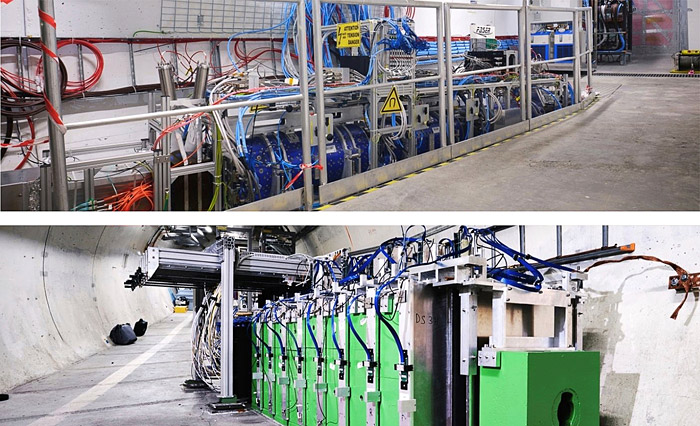
Electronic english version since 2022 |
The newspaper was founded in November 1957
| |
COMMENT on the event
Results of research on observation of neutrinos
at LHC at CERN published
Physicists of the FASER and SND@LHC collaborations have observed neutrinos for the first time at the Large Hadron Collider (LHC) of the European Organization for Nuclear Research (CERN). At the same time, the detected neutrinos have the highest energy ever recorded in a laboratory environment.
Scientists believe that this achievement will make a significant contribution to current experimental research in the fields of elementary particle physics and could soon pave the way for further discoveries in this field. Recently, the results of the research have been published in the Physical Review Letters journal in two articles issued on behalf of two collaborations. A co-author of one of the articles, a participant of the FASER experiment, Head of the Experimental Neutrino Physics Sector of the Scientific and Experimental Department of Elementary Particle Physics of the Laboratory of Nuclear Problems at JINR Yuri Gornushkin commented on the results of the data set runs, in which neutrinos were detected, and their significance in the scientific world.
“The significance of the published results is that for the first time scientists managed to observe neutrinos from the Large Hadron Collider. The active detectors at the LHC are not designed to observe neutrinos. However, the FASER and SND@LHC facilities created specifically for this purpose managed to observe them about 400 m away from the LHC proton collision point. At the same time, neutrinos from the LHC have much higher energy than other neutrinos of artificial origin,” Yuri Gornushkin says. “The FASER collaboration managed to observe 153 neutrino interaction events in a detector – by the way, relatively small and inexpensive – located along the line of one of the proton beams colliding in the ATLAS facility. After some time, the SND@LHC collaboration announced the observation of eight more events involving neutrinos in its detector, which is installed along the second proton beam line.”

Detectors FASER (above) and SND@LHC (below). Photo by CERN
Until now, neutrinos of artificial origin have been obtained in reactors and at extracted accelerator beams. But these neutrinos have much lower energies, from several MeV to several tens of GeV. On the contrary, galactic neutrinos observed by the IceCube and Baikal-GVD neutrino telescopes have energies exceeding thousands of TeV. Now, scientists have the opportunity to study neutrinos in the intermediate range from several hundred GeV to several TeV. This is the energy of neutrino beams obtained at the LHC. This is the novelty of these studies and their scientific significance.
Thus, the obtained results open a way to in-depth studies of the properties of neutrinos in a new energy range.
“Both experiments continue to collect data. In the future, we expect to obtain new results concerning the properties of neutrinos from the LHC, as well as the search for new weakly interacting particles, the existence of which is predicted in some models,” Yuri Gornushkin notes.
Based on the information from the JINR Press Office